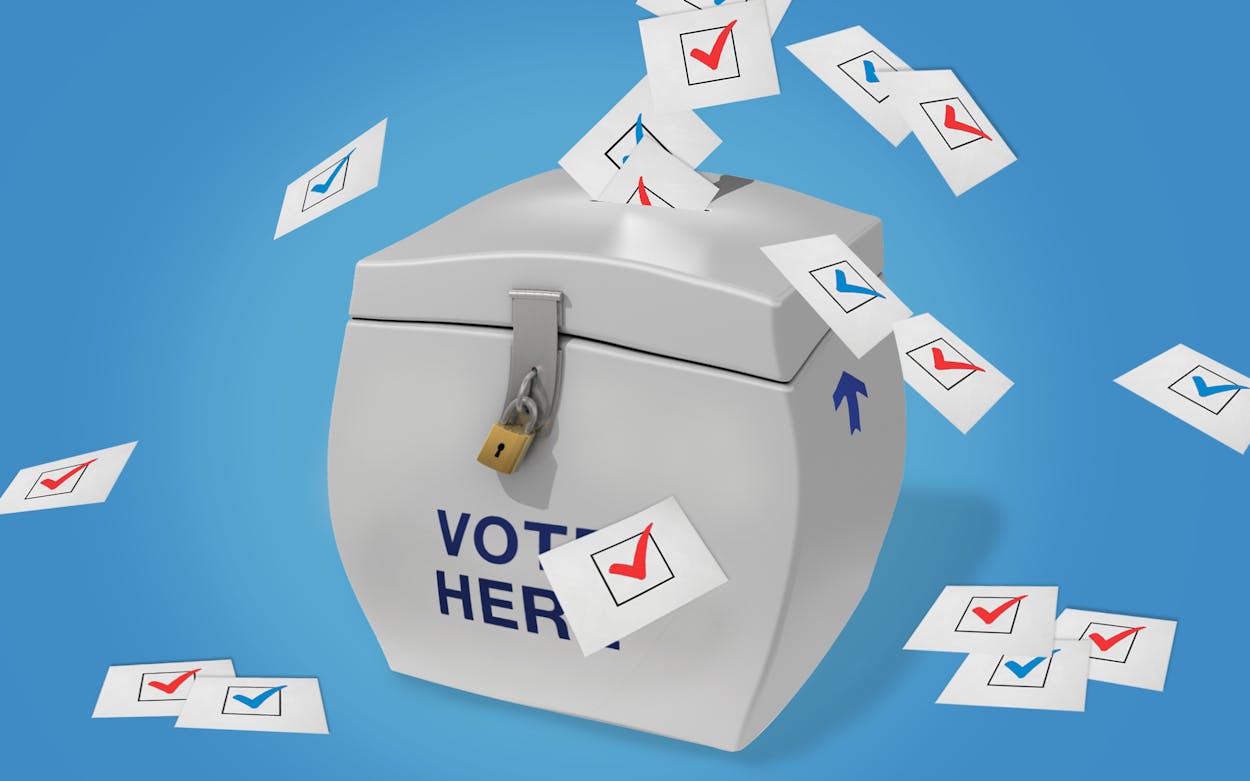As of Tuesday afternoon, 4,706,398 Texans had cast a ballot in the first seven days of early voting. They represent almost a quarter of the state’s registered voters, and more than half of the total number of voters in the 2016 election.
There are a lot of things we can conclude from that turnout, and even more that we cannot, including, alas, who those voters are casting their ballots for. We can conclude that enthusiasm is high, and we can tell that some parts of the state—Harris, Denton, and Galveston counties, for example—have seen huge spikes in turnout relative to this point in the last presidential election. We can also say that just a smidge more than 35 percent of the voters who’ve participated so far are not regular voters—at the very least, they haven’t participated in either party’s primaries in the past eight years.
All of this participation is unusual for Texas. We are, after all, a famously low-turnout state. The “Cost of Voting Index,” which considers the logistical barriers facing voters in each state, ranks Texas dead last. In 2016, we ranked 43rd among the 50 states and the District of Columbia in terms of turnout, with just 51 percent of Texans eligible to cast ballots doing so.
We don’t know if that ranking will change in 2020. But we do know that Texas has cast more ballots so far than any other state. Let’s repeat that, because this is something Texans don’t normally get to boast about: Texas has cast more ballots so far than any other state.
That’s partly a function of our large population—even in 2016, we came in third, behind more populous California and the swing state of Florida. It’s also partly a result of the extra six days of early voting in Texas this year. Not every state has already had a full week of in-person voting. But those aren’t the only factors at play here. Not only do the 4.6 million Texans who’ve already voted dwarf the number in the next highest state (3.58 million in California!), they also elevate Texas to number one in turnout as a percentage of voters who cast ballots in 2016.
Texas’s early vote total thus far represents more than 50 percent of the 2016 total turnout. In other words, more Texans have cast ballots early this year than voted for either Donald Trump or Hillary Clinton in 2016. That number doesn’t have anything to do with our size—wee lil’ Vermont, which has a smaller population than El Paso, takes second in this particular contest—and reflects the enthusiasm around the state. No other state has even hit 50 percent yet.
In 2016, just fewer than nine million Texans cast ballots in the presidential election. If the turnout we’re seeing thus far in 2020 reflects ongoing enthusiasm among the broader electorate, rather than a rush among the most engaged voters to make sure their votes count, it’s likely to dwarf the 2016 figure. If the same percentage of the estimated 18.8 million eligible Texans participate in 2020 as voted in 2016, we’d be looking at an election with 9.65 million voters. If that rate increases by several percentage points—say, to 60 percent of eligible voters—Texas could hit 12 million voters and still only rank 38th in turnout (and that’s assuming the other states have 2016 levels of participation).
We don’t know yet if the trend of high participation and high enthusiasm we’ve seen over the first week of early voting will continue. In pre-pandemic times, Texas’s early voting period was just two weeks, and we typically saw a lull from the middle of the first week until the middle of the second, at which point voters rushed to the polls before Election Day. Is that happening this year? Participation dropped off this Sunday—down to about 180,000, from a daily average of more than 700,000 during the first week—but rebounded to a healthy 585,000 on Monday. If the inevitable lull is just a dip, then maybe Texas can finally pull itself out of the voter participation negative zone the state has been stuck in for years. So far, things are on track to for that, but there are a lot of days left between now and the election. Either way, Texans can enjoy some rare bragging rights about our electoral participation at this point in 2020—and if we want to keep boasting through Election Day, all we have to do is keep encouraging everybody we know to go vote.
- More About:
- Politics & Policy








